Manage Chicken Food Safety Like a Chef, from Shopping to Post-Cooking Storage
It is always important to consistently follow certain safe food handling practices, whether making a meal for yourself or your family, or preparing a feast. That’s because all raw food products—whether it is produce, fruit, meat, or poultry—could contain bacteria that might make someone sick. But, there are steps people can take in the home to significantly reduce their risk.
Here are 4 steps you can take to help prevent the risk of foodborne illnesses from chicken. It’s as easy as separate, chill, clean and cook.
1. Separate
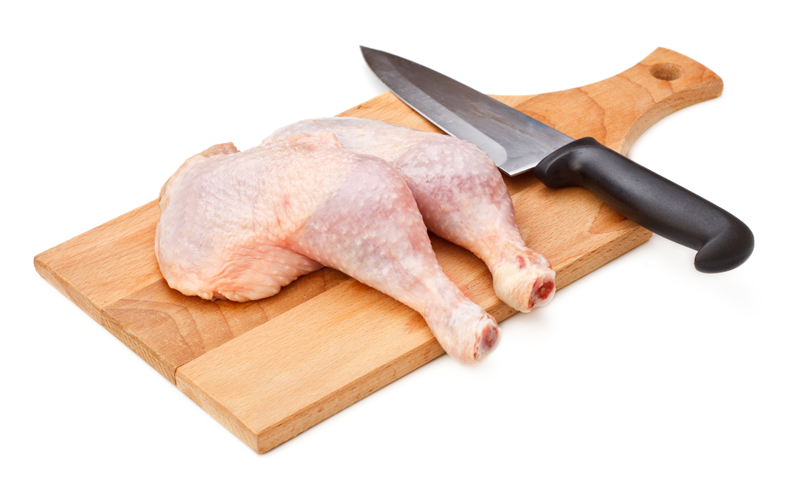
Food safety doesn’t start in the kitchen, but at the grocery store. First, shop for chicken last to keep products as cold as possible, and look for fresh poultry with ‘sell by’ dates that are several days away. When possible, place uncooked chicken in a disposable bag before adding it to your cart, and leave it in the extra wrapping when refrigerating or freezing it at home.
Storage placement makes a difference, too. Set fresh chicken on the lowest shelf to help keep raw juices from spreading to other foods, especially salads or pre-cooked dishes. This is because bacteria from contaminated poultry juices can live on refrigerator surfaces for days or even weeks.1
Once you’re ready to cook, don’t rinse raw chicken–whether it’s with water, a diluted lemon juice or vinegar solution.2 Contrary to trending cooking demos, washing chicken can cause raw juices to contaminate other foods3, along with utensils and countertops. Always use a separate cutting board for raw chicken, and never reuse a cutting board, plate or other surface that held raw chicken without washing it first.
2. Chill
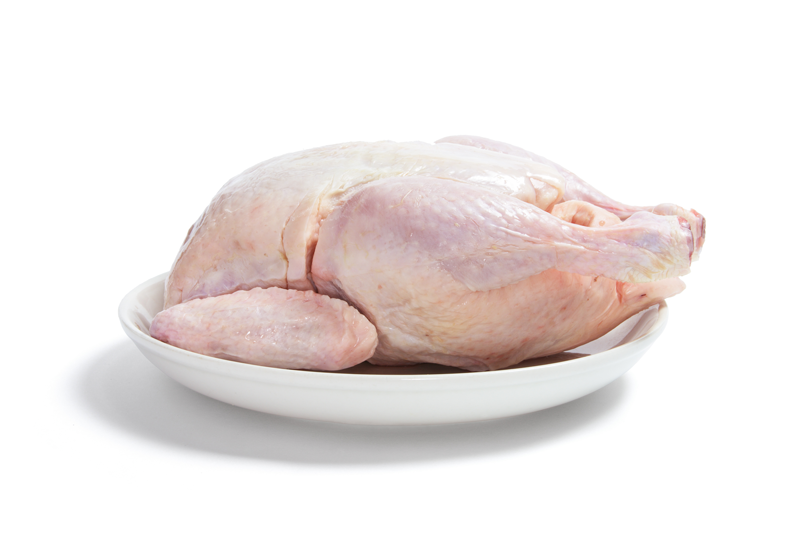
Thaw uncooked chicken in the fridge at or below 40°F, not on the countertop or in cold water. This is because bacteria can multiply quickly at warmer temperatures.
When barbecuing chicken, keep poultry refrigerated until the last minute. Once grilled, use a new plate for the cooked chicken, so you aren’t contaminating your meal in raw juices.
Marinating poultry? Don’t let the marinade sit in the fridge longer than 2 days. And never use leftover marinade on cooked poultry, unless it’s boiled first.
3. Clean
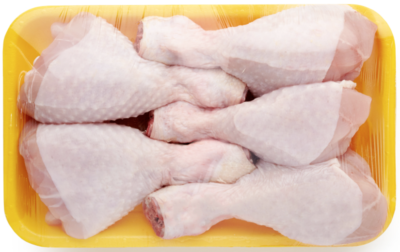
As with any food prep, wash your hands with warm, soapy water for 20 seconds—about the same as singing ‘Happy Birthday’ from beginning to end, twice—before and after handling raw chicken.
Of course, it’s not just your hands that you need to wash: also wash kitchen work surfaces, cutting boards and utensils thoroughly with soap and hot water right after they have been in contact with raw chicken, and before preparing your next dish.
4. Cook
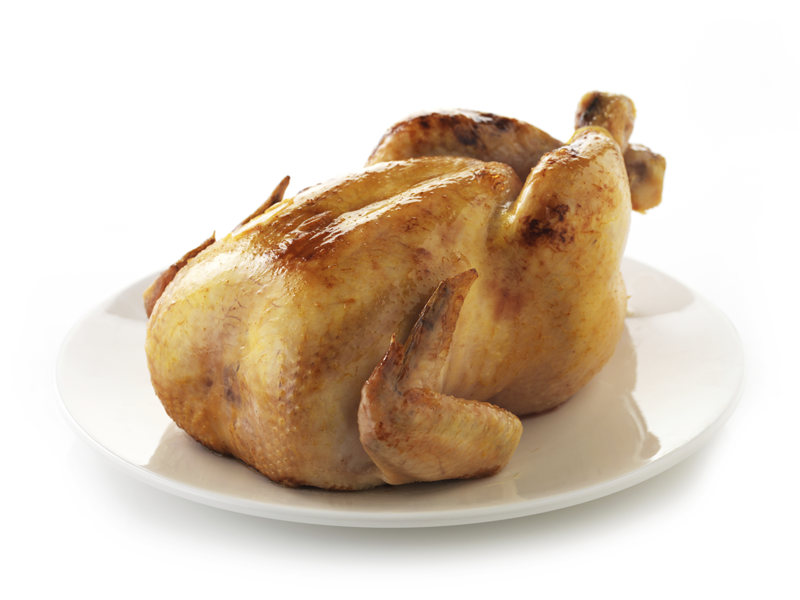
Looking at chicken to see if it’s pink-free doesn’t necessarily mean it’s safe to eat. Use a food thermometer to make sure chicken is properly cooked to a safe, internal temperature of 165°F. Measure the thickest parts of the chicken since those areas tend to cook more slowly, and test several sections. Refrigerate leftovers within 2 hours after cooking, and before 1 hour if chicken is exposed to high temperatures above 90°F.
Cooking a microwaveable meal with frozen chicken? Handle it just like fresh raw chicken, and follow all cooking instructions to avoid food poisoning. Not sure the chicken you ordered at a restaurant is fully cooked? Send it back for additional cooking.
Whenever you end up with leftover chicken, follow these storage guidelines:

The Chicken Industry: Continuously Engineering Safer Food Solutions
The chicken industry is committed to reducing foodborne illnesses by investing significant resources—at the hatchery, feed mill, farm and plant—to make sure the products you purchase at the grocery store are as safe as possible.
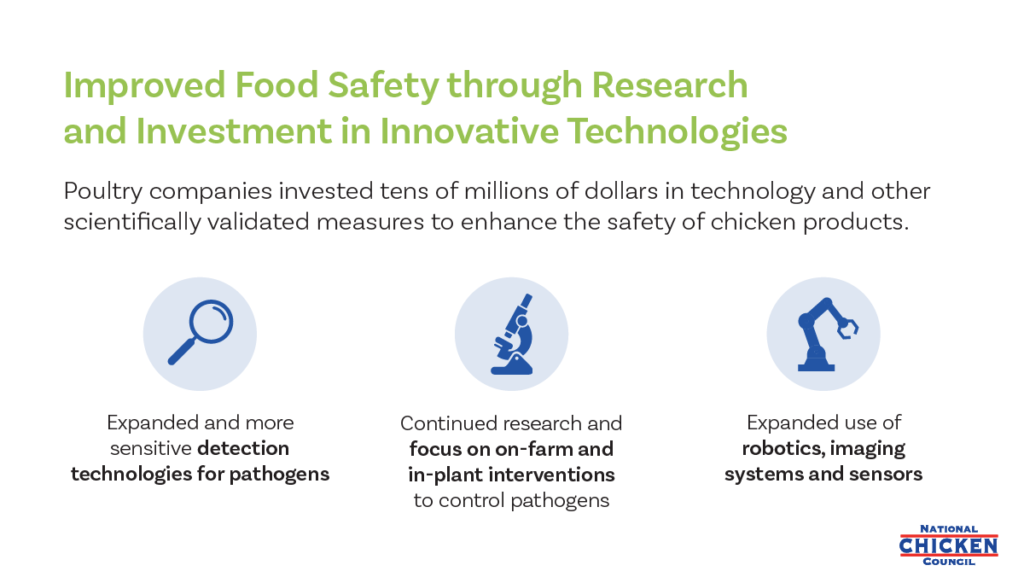
More Questions?
For additional information or questions about chicken food safety, contact the U.S. Department of Agriculture (USDA) Meat and Poultry Hotline at 1-888-MPHotline (1-888-674-6854), or visit:
- The Fight BAC!® Website: The Partnership for Food Safety Education offers food safety educational resources based on up-to-date, scientific recommendations and extensive consumer research.
- Gateway to Government Food Safety Information: FoodSafety.gov shares the latest news, alerts and tips on safely handling and storing food to prevent food poisoning.
Sources:
1Chen, F., Godwin, S., Frederick, A., Wakefield, M. and Gagula, H. 2015. Survival of salmonella on the kitchen and food packages surfaces contaminated with raw meat juice. Journal of Food Protection 78(A):181.
2″Survival of Salmonella on raw poultry exposed to 10% lemon juice and vinegar washes. Science Direct, December 6, 2018. https://www.sciencedirect.com/science/article/abs/pii/S0956713518303244
3″Washing Raw Poultry: Our Science, Your Choice.” U.S. Department of Agriculture, August 20, 2019. https://www.usda.gov/media/press-releases/2019/08/20/washing-raw-poultry-our-science-your-choice
4″Cold Food Storage Chart.” FoodSafety.gov, September 20, 2021. https://www.foodsafety.gov/food-safety-charts/cold-food-storage-charts